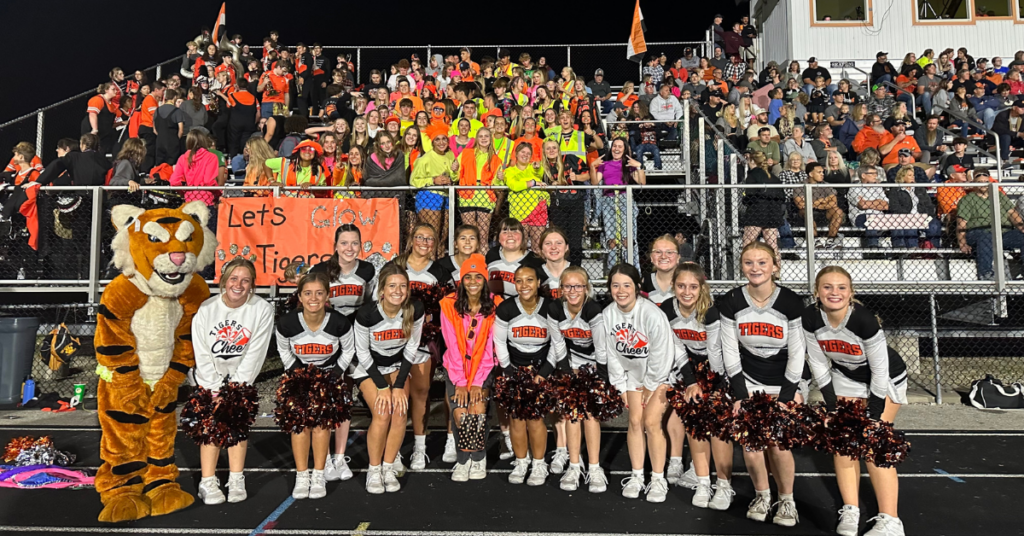An exciting part of fall is the return of Friday night football. But tragically, many communities across the country have already been shattered by gun violence this school year on far too many Fridays. While school shootings continue to be a painfully regular occurrence, we hope that Americans refuse to become complacent in accepting this as normal. Ever since my school experienced a shooting in January of 2017, each of these tragedies has impacted me indifferent and profound ways.

Lately, it seems like after-school events and activities have become more frequent targets. Just in the last two months, schools in Oklahoma, Louisiana, New York, California, Georgia, Illinois, and elsewhere have experienced shootings on or around campus during a high school football game. As a principal and as a parent, this is frightening. Friday night football in my home state of Ohio and across the country is a long-standing, proud tradition. In many cases, it is the one time each week that the entire community gathers to show their support for the school. Traditions like homecoming and senior night are often some of the best memories for our young people. And football games are just one of many extracurricular events that regularly welcome families, guests, and communities onto campuses.
As a school leader, I want to do everything I can to make sure that these events are safe. The nature of an outdoor event that is open to the public presents many challenges, but we are not helpless. One of the best tools we have to promote safety and security is our school community. Parents and students need to know that the commonly used school expression, “See Something, Say Something,” applies outside of school hours as well. It could be a comment that is overheard, a post on social media, or another avenue. In all these cases, when someone hears something that concerns them, we need to make sure that all in our community know how to report that concern before and during a school function. One of the most significant findings of the “Averting Targeted School Violence” analysis conducted by the U.S. Secret Service in 2021 was that “targeted school violence is preventable when communities identify warning signs and intervene.” We must continue to emphasize the importance of close cooperation between schools, law enforcement, and communities, not just related to potential targeted violence during the school day but at after-hours school and community events as well.
Many schools utilize a teaching matrix to communicate classroom and schoolwide expectations for success, such as being responsible and respectful, and some are now using that same teaching matrix to reflect the school values and expectations for these larger community events. Extending and sharing that matrix to larger community events helps to reinforce what all attendees must do for a safe and positive experience.
The Center of Positive Behavioral Interventions and Supports, funded by the U.S. Department of Education’s Office of Special Education Programs (OSERS) and the Office of Elementary and Secondary Education (OESE), recently published a brief, with examples, to assists schools and districts in applying their schoolwide matrix to extracurricular activities. “Extending Schoolwide Systems to Support Extracurricular Activities” provides five actionable steps to implement community expectations by providing consistent messaging and teaching and by ensuring that extracurricular events are seen as an extension of the school environment. Sporting events, music or theater performances, dances, and other celebrations can be important avenues for building and strengthening community engagement and supporting student connection in schools.
Examples of extending schoolwide expectations to school community events include:
- Reminding attendees to exhibit appropriate behavior in welcoming remarks: “Please join our school in ‘BEEing our Best’ during this performance,” and quickly sharing schoolwide expectations. Schools may also include a section in the program or on posted signs as participants enter the performance area sharing how to participate in a safe, positive, responsible, and respectable way. Examples of sharing expectations may include being responsible in the auditorium (e.g., eating and drinking only in the lobby and keeping feet on the floor) and being respectful (e.g., silencing your phone and clapping at appropriate times).
- Posting expectations at entries and in restrooms at school dances. If guests are allowed, consider a process for approval of attendance and notification of expectations. The disc jockey or band could include reminders during song transitions about the expectations and reinforce positive examples.
- Posting expectations outside of venues, limiting personal belongings, and asking announcers for athletic events to share expectations and provide reminders before and throughout the event. Cheerleaders can also include reminders in cheers and on posters, and reminders can be posted on scoreboards at the snack bar and in restrooms.
- Making attendees aware of schoolwide expectations for events that are open to the broader community. Schools can and should include information in event announcements, programs, and posters reminding attendees of their role in event safety. “See Something Say Something” information should always be included. All participants should know how to report a concern via text, phone, or personal contact during any school event.
When a tragedy does unfortunately occur, NASSP’s Principal Recovery Network (PRN) is there to support the school and principal in their time of need. If your school has been impacted by gun violence, please share the PRN’s “Guide to Recovery” and encourage the principal to reach out directly for support. The PRN is also proud to partner with the U.S. Department of Education to assist school districts as they support and respond to incidents of school violence. We encourage impacted schools and districts to connect directly with Renee Bradley [email protected] for information on recovery, federal grant support, and more.


1 Comment
Thank you for sharing these insights and practical steps we can take for our students, staff and communities.